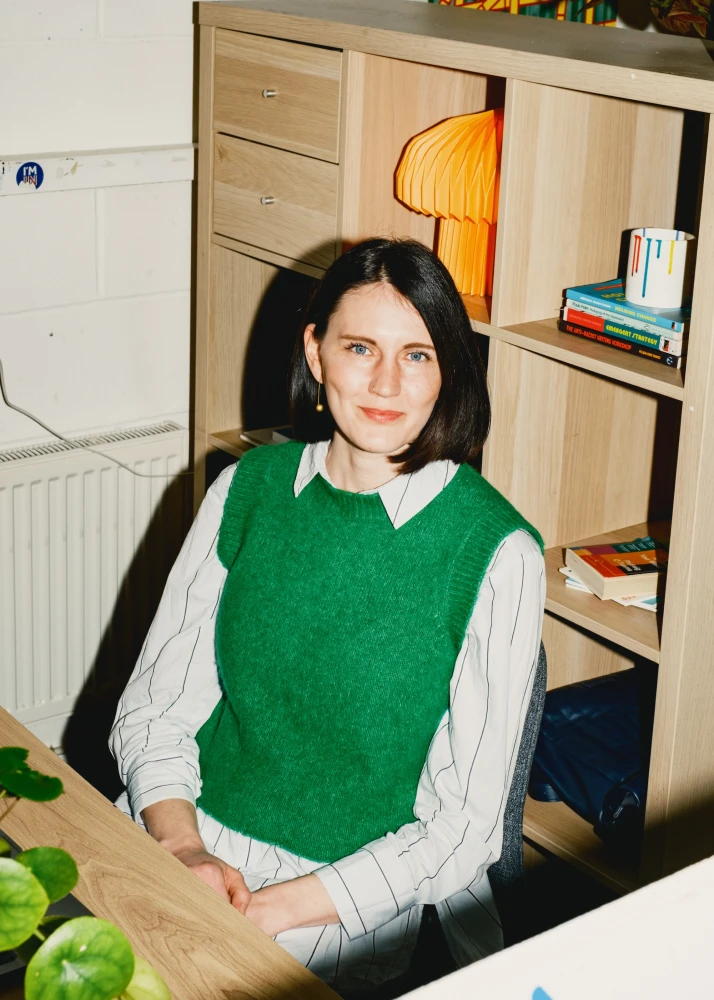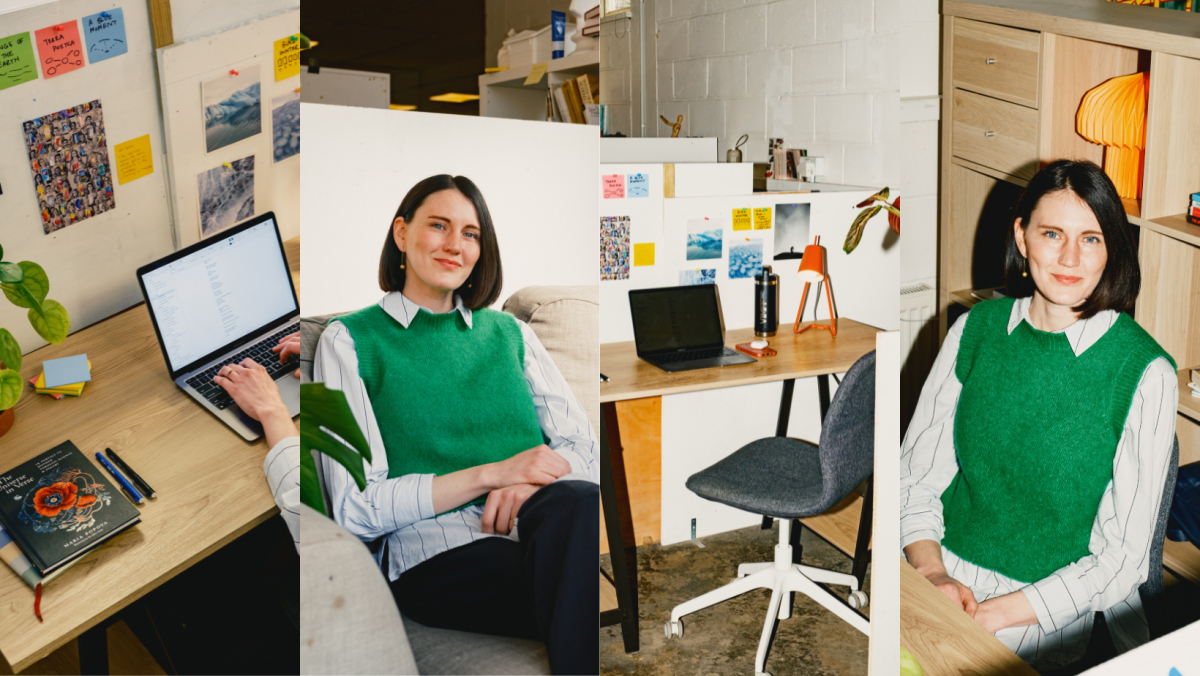This website uses cookies in order to enhance the overall user experience.
Weaving art, ecology and education with Alyssa Martens
Step into the world of Alyssa Martens, and you step into a space where the boundaries between art, science, and activism blur into something wholly immersive.
As a literary artist and curator working at the intersection of people and planet, Martens has built a practice that is as poetic as it is urgent. Her installations are not just artworks, but experiences. Narrative environments that evoke loss, migration, resilience, and ecological transformation. In a time of climate crisis, her work is an invitation to feel, to engage, and ultimately, to act.
Now, as she settles into a shared workspace at Hackney Downs Studios, surrounded by a constellation of artists, makers, and visionaries, Martens brings her distinctive practice into the heart of East London’s creative ecosystem.

“We are in a crisis of care, and as artists, I believe we play a significant role in creating spaces for audiences to reconnect with each other and with our planet,” she explains. “I've always loved interdisciplinary learning, and I've built a career by pulling threads from different disciplines and finding their meeting points.”
Her practice is a testament to this philosophy. Her installations, such as Lungs of the Earth and Black Winter, are collaborative ecosystems in themselves, woven together with contributions from artists, ecologists, physicists, poets, and composers. For Lungs of the Earth, Martens brought together a team of Brazilian, Indigenous, and Latinx artists to craft a sensory tribute to the Amazon Rainforest, or ‘the last forest.’
“Our process was highly collaborative, and along the way, we had rich discussions about cultural heritage and belonging alongside our creative practice,” she recalls. The resulting work, a tapestry of field recordings, spatial sound, spoken word, and tactile illustration, feels as organic as the ecosystem it honours.

These projects are not simply about ecological storytelling. They are about shifting perception, about making the intangible (vanishing landscapes, silenced histories) palpably present. For Black Winter, Martens embedded herself in the High Arctic, attending the largest annual gathering of Arctic scientists and working alongside subject specialists to understand the impact of climate loss at its most extreme. Now, she is developing A Blue Moment, a new multimedia installation that will debut in Rio de Janeiro in 2026, layering film, poetry, dance, and sound to explore the resilience and erasure of Arctic colours and textures in the face of environmental collapse.
Her process is deeply community-driven, an approach that ensures her work remains dynamic and responsive. “When I work with communities, it's about making space for what is already alive and moving, bringing to the surface stories that have been embedded in a place long before I've arrived,” she says. “Every community dynamic is different, so the process is never quite the same, but it is always emergent.”
Beyond installations, Martens is also shaping environmental education. Currently, she is leading the redesign of Bertha Earth’s curriculum for London schools, intertwining storytelling with opportunities for direct nature connection and environmental action. Her goal is clear — to shift learning from an abstract, fact-based approach to something tactile and relational. “My aim is to facilitate creative learning spaces that allow participants to learn with their environment rather than about it, and in so doing, increase their sense of agency and belonging to a place.”
Navigating the intersections of art, science, and social change is not without its challenges. Martens is keenly aware of the responsibilities inherent in her work. “When creating art for social impact, considering whose voices you are centring in your creative and consultation processes is key,” she notes. “And you have to be willing to be wrong, to be challenged in your thinking and creative practice. There's no use creating an installation about a place; we have to learn to create with place—in partnership with its peoples, histories, and interests.”
In an era where climate discourse is often abstract or overwhelming, Martens’ work cuts through the noise with an intimacy that lingers. By immersing audiences in the textures, sounds, and stories of fragile ecosystems, she offers something rare: the space to truly feel the urgency of the moment. And in that feeling, there is the potential for change.
To discover more about Alyssa’s groundbreaking work, visit her website.

